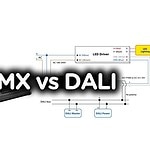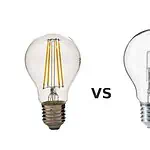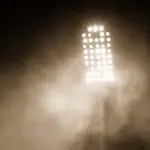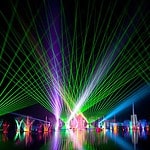Ultraviolet or UV rays are harmful rays emitted from the sun. It’s one of the forms of electromagnetic radiation whose wavelength ranges between 10 nm to 400 nm. On the other hand, UV rays with long wavelengths are known as ionizing radiations. However, such expression is considered because photons don’t acquire the maximum energy required to ionize atoms.
To backfire the sun’s rays, the earth’s ozone layer plays a crucial role as it interferes with the perforation of UV rays. After looking into the wavelengths and photon energy, UV rays are divided into three kinds: UVA, UVB, and UVC.
In this article, you’ll see insights into UVA, UVB, and UVC, along with their detailed differences.
UVA Explained
One of the critical types of ultraviolet rays is UVA rays. UVA has a longer wavelength and a broad electromagnetic spectrum of ultraviolet radiation (UVR). UVA plays a crucial character in skin cancer and skin aging.
It can easily penetrate deep into the skin and promotes premature aging. However, it is a primary step of wrinkle formation, professionally termed photoaging.
The UVA rays have a wavelength range of 315 – 400 nm. Nonetheless, the photon energy of 3.10 – 3.94 eV, 0.497 – 0.631 eV. According to some professions, the quality of UVA rays is almost 500 times more than UVB rays. In contrast, it can be concluded that UVA acts as a safeguard material for the skin and inhibits the penetration of UVB rays.
As the wavelength of UVA rays is longer, uncomplicated penetrations are acquired. However, these rays are not absorbed by the ozone layer. The UVA or black lights contain a violet filter, providing a dim violet glare.
UVB Explained
UVB is another type of invisible ray that is emitted from the sun. This kind of radiation contributes a lot to skin darkening and easily thickening the outer layer of the skin. However, the primary reason for skin darkening is excessive melanin production, which has been stimulated by UVB radiation.
Additionally, UVB rays also take part in skin cancer by lowering the immunity power of the immune system to combat such situations. Irritation in the eyes because of UVB is quite common. However, high-spectrum sunscreen can be the best option to protect the outer layer of the skin from UVB.
The wavelength of UVB is 280 – 315 nm. The photon energy value is 3.94 – 4.43 eV, 0.631 – 0.710 eV. UVB doesn’t have a long wavelength like UVA and can also easily get absorbed by the ozone layer. In medical science, UVB radiation is used to cure several skin problems like vitiligo or psoriasis. Special lasers or lamps are used during the treatments, emitting UVB rays.
UVC Explained
The ozone layer of the earth acts as a protective layer for the planet which inhibits the penetration of ultraviolet rays of the sun. However, the sun world works very prominently regarding UVC radiation as it can easily obstruct UVC rays from reaching the earth.
Nonetheless, UVC is germicidal, and thus it also takes part in ultraviolet phototherapy. UVC is used chiefly for the prevention of airborne diseases which are caused by viruses and bacteria. These radiations inhibit the spreading of germs which causes any extra harmful effects.
The wavelength of UVC is 100 – 280 nm, and its photon energy is 4.43 – 12.4 eV and 0.710 – 1.987 eV. In medical science, UVC is used in wound healing procedures from some specialized lasers and lamps. Moreover, treating vitiligo and psoriasis with UVC is one of the most common strategies by several skim specialists.
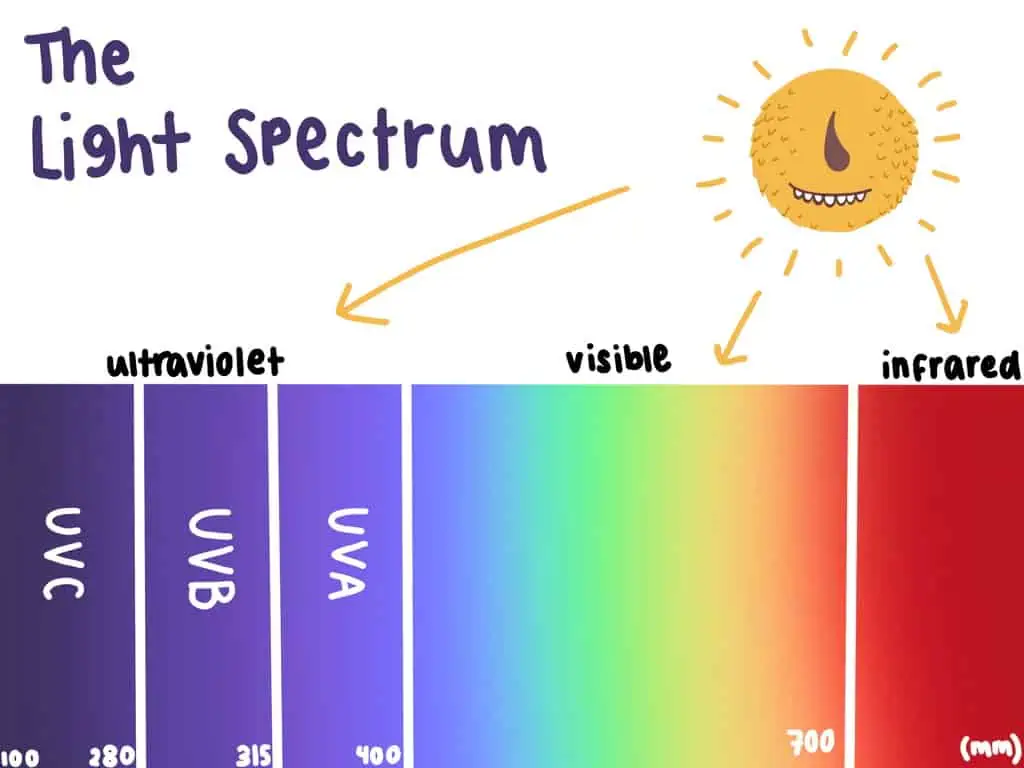
Differences Between UVA, UVB, & UVC
The comparison table below compares each light ray on various bases.
| Features | UVA | UVB | UVC |
| Wavelength (nm) | 315 – 400 | 280 – 315 | 100 – 280 |
| Length of wavelength | Long-wavelength UV | Medium-wavelength UV | Short-wavelength UV |
| Photon energy (eV, aJ) | 3.10 – 3.94,0.497 – 0.631 | 3.94 – 4.43,0.631 – 0.710 | 4.43 – 12.4,0.710 – 1.987 |
| Absorption by the ozone layer | The ozone layer of the earth doesn’t absorb it. | The ozone layer predominantly absorbs it. | The ozone layer completely absorbs it. |
| Penetration | Internal layers of the skin | Medium level | Topmost surface |
| Consequences | Construction of skin cancer. | Sunburn and malignant melanoma. | Intense burns of the skin and eye injuries (photokeratitis). |
- Wavelength
Wavelength specifies the stretch between points lying on the identical phase of the wave. However, the wavelength highly depends on the medium the wave travels. The wavelength of the UV rays expresses how Long the waves can travel. Moreover, it conveys the movement of the beams from one medium to another. The wavelengths of UVA, UVB, and UVC are 315 – 400 nm, 280 – 315 nm, and 100 – 280 nm.
- Photon energy
The energy carried by a single proton is termed photon energy. You can assume that a photon’s wavelength remains inversely proportional to its energy. In contrast, its electromagnetic frequency increases with the photon’s energy. Moreover, this type of energy expresses the frequency of each photon concerning the beams of light. It furthermore explains the intensity of the UV radiation.
- Absorption by the ozone layer
The earth’s ozone layer can enthrall wavelengths from about 200 to 310 nm. Nonetheless, its maximum absorption is 250 nm. The UVA wavelength is 315 – 400 nm, so the ozone layer does not absorb it. The wavelength of UVB and UVC is comparatively less, so they are partially and fully soaked, respectively.
- Penetration
The wavelength and the intensity of the UV radiation determine the generation power of the beams. As the UVA wavelength increases, it can easily penetrate the skin. UVB perforates up to the medium layers, whereas UVC can only come in contact with the top surfaces.
- Consequences
Each type of UV radiation provokes different skin issues. UVA is very active in stimulating skin cancer. However, it can also be enunciated that it works as the primary step to initiate skin cancer. Too much exposure to UVB leads to sunburn and excessive melanin formation, which directs malignant melanoma. Acute exposure to UVC can cause photokeratitis, leading to redness in the eyes, swollen eyelids, headache, and blurred vision.
Effectiveness Of UVC In Inactivating SARS-CoV-2 Replication
Does UVC work potentially in evaluating SARS-CoV-2? Surprisingly the answer is yes. It effectively soothes the transmission of SARS-CoV-2. The effectiveness of the virus is minimal considering the biosafety level 3 (BSL3) laboratories.
However, the effects of the virus can readily be evaluated in terms of doses and concentrations. If a virus’s density is considered high, then the 3.7 mJ/cm2 dosage of UVC is sufficient.
This dosage amount is enough to inactive the cell cycle and thus inhibit virus replication. If someone expects to inactivate the entire replication procedure, the maximum dosage of 16.9 mJ/cm2 is required.
UVC is an essential tool that helps inhibit the virus’s repast at a wide range. Moreover, the wavelengths of the UV radiations operate predominantly in killing harmful pathogens.
The broad wavelength of UVC, 222 nm, stood up as the best catalyst as a disinfectant. Moreover, this specific wavelength is enough and safe for humans and thus doesn’t plod away inversely on health. Hence, coming in contact with UVC from KrCl excimer in broad areas helps consolidate the virus’s surface transmission.
KrCl* excimers impose damage in nucleic acid and protein with the higher protein absorbance with wavelengths of around 222 nm from UVC.
FAQs
Short-wavelength ultraviolet rays are more dangerous. Among all the types of UV radiation, UVC is the most extensively destructive. The penetration power of UVC is deficient because it cannot cross the ozone layer and reach the earth’s surface.
Still, UVC is harmful when obtained from artificial light energy sources like mercury vapor lamps. However, it directly doesn’t take any part in initiating skin cancer. A long term exposure to UVC can lead to severe skin issues and ulceration.
UVB is primarily responsible for sunburn. However, these radiations can destroy the outer and the protective layer of skin and finally work as the initial step for skin cancer. Too much exposure to the sun damages the squamous and basal cells and thus promotes skin cancers. Explosive or higher sunburns can cause irreversible skin conditions.
Melanoma is a type of skin cancer that initiates excessive melanin production. UVB is most likely to develop such a condition. However, the initiation of excessive melanin production is caused by too much exposure to the sun. UVB induces oxidative stress along with destruction in DNA which results in mutation. However, skin inflammation is one of the standard warnings of melanoma.
You can protect yourself by wearing a hat with a wide breadth which can easily cover your ears, face, and neck as well. Additionally, sunglasses can act as a shield for the surface around the eyes.
On the other hand, it’s essential to put on sunscreen before stepping outdoors. Concerning the sun protection factor (SPF), it’s crucial always to utilize higher elements to protect the skin from UVA and UVB. Please note that wearing sunscreen all the time or for a long time isn’t recommended, though.
Nonetheless, it’s preferable to avoid any interaction with the daylight between 10:00 am and 4:00 pm for better protection. Also, staying in shades can help prevent a sun tan.
Can thick wearing clothes shield anyone from sun rays? The answer is yes. Wearing semisynthetic or synthetic clothes can also function as coverage from UV rays. Moreover, heavy or thick material clothes like woolen and denim can also perform as a defense mechanism from sun rays.
It’s inappropriate to notify the audience that UV rays are meant to damage skin barriers which result in cancer. Sometimes UV rays can also be a virtual queue for the body. It encourages the production of vitamin D, which is directly associated with phosphorus and calcium absorption.
However, Vitamin D plays an essential character in bone formation by absorbing calcium and phosphorus. This procedure peacefully helps to initiate skeletal development, as well as blood cell formation.
UV rays are also promoted to treat skin conditions associated with modern phototherapy. These rays work prominently to behave toward eczema, atopic dermatitis, psoriasis, etc. Specifically, UVB performs better in provoking a cell cycle that has been caught sight of in keratinocytes.
The UV index is the tool that measures the UV radiation level at the surface of the earth. It also illustrates the intensity of the UV radiation. UVI provides information on the importance of protecting themselves from UV radiation.
According to the World Health Organisation, if the UVI is 3 or more than that, then it’s highly crucial to protect the skin from the rays of the sun. If the UVI ranges between 1 – 2, then it’s considered to be low and thus determined as safe to step outdoors.
Conclusion
Generally, people have a notion that UV rays are harmful. But on the other hand, it has also served positively in the purification system and the medical field. UV radiation’s adverse effect is so evident that it has overpowered its positive junctures. After looking into the subtypes of these beams, the intensity and effectiveness can be specified easily.
Surprisingly, UVC can also function prominently in the replication or spreading of the viruses of SARS-CoV-2. The audience believes that UV radiations are always climacteric to affect the health of humans. However, the specific wavelengths of the UV rays have always been conducted efficiently to conserve humans from the deadly virus destroying their existence.
LEDYi manufactures high-quality LED strips and LED neon flex. All of our products go through high-tech laboratories to ensure the utmost quality. Besides, we offer customizable options on our LED strips and neon flex. So, for premium LED strip and LED neon flex, contact LEDYi ASAP!


